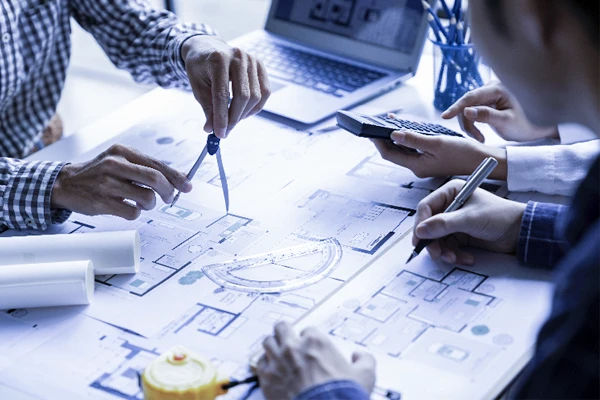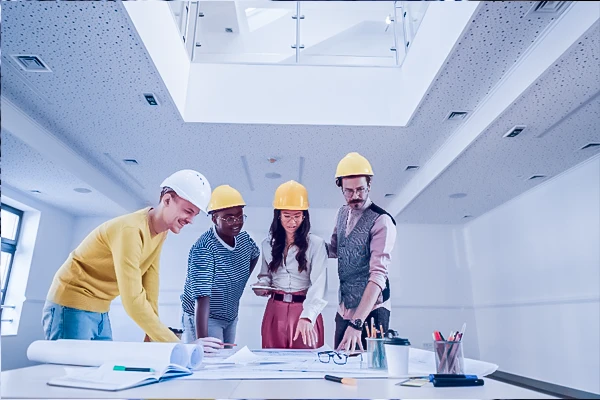
Understanding the Different Phases of BIM Construction Workflow
When you hear the word BIM construction workflow, what’s the first thing that comes to your mind? Digital processes that integrate multiple phases of construction project to improve collaboration, efficiency, and accuracy throughout the project lifecycle, right? Indeed it’s the same.
In this article, we will explore the different phases of BIM Construction Workflow. Therefore, ensure you read the blog until the end to learn more about it.
BIM Construction Workflow – A Quick Recap
BIM workflows have revolutionized the building methods and how infrastructures are designed, built, and maintained in this modern age. While we are at it, we must mention that BIM workflow is not just another fancy acronym. From conceptualization phase to training, and from implementation phase to maintenance, it entails everything.
Unlike conventional building methods, BIM workflows offer a holistic approach to the design and construction processes. That makes BIM an effective and integrated solution that provides efficiency and accuracy. The creation and management of 3D models and the visualization of their physical and functional characteristics add to BIM’s significance. These workflows also act as a centralized platform that keeps all the stakeholders connected for efficient coordination. Without coordination and collaboration, the teams can’t meet their project requirements. But thanks to technological advancements, everything is now streamlined.
Different Phases of BIM Construction Workflow
In this part of the blog, we will highlight the different phases of BIM Construction Workflow.
Before we delve into the phases of BIM Construction Workflow, know that these phases contribute to the successful completion of a project. In addition, the stakeholders can stay up-to-date with the project even after its completion. The credit for that goes to the BIM enhanced lifecycle management feature.
1. Conceptualization & Planning Phase

Okay, so the first phase of the BIM Construction Workflow is Conceptualization and Planning. In this initial phase, the project teams define the project’s objectives and goals. While they are at it, they also put forward concerns and constraints that might impact the project. This process gets streamlined through virtual visualization and analysis of design concepts.
The stakeholders can also assess the current design options while exploring other possibilities. Furthermore, they can also make informed decisions by proactively providing solutions to mitigate risks.
2. Design & Development Phase
Design and Development is a crucial stage as it brings together the stakeholders to develop highly intricate and detailed 3D models. Every concerned team member, including architects, engineers, and designers, participates in this phase. They start by leveraging BIM technology to create their models while collaborating and coordinating with other project teams.
The ultimate goal of the stakeholders is to ensure that all the design elements are integrated. Since BIM offers parametric modeling, anything and everything design-related can be instantly viewed and updated in real time. This seamless integration allows optimized performance and sustainable decision-making.
3. Implementation Phase
With that begins the practical part, the Implementation Phase. In this phase, the construction process is also initiated. Since the construction teams now have the roadmap in their hands, they utilize BIM Models and efficiently move towards project execution.
This process becomes error-free as the project teams proactively resolve conflicts and clashes that may arise during this crucial stage. We must also mention that project teams stay connected to access the project through BIM mobile apps. In case of an on-site challenge, they collaborate immediately to resolve it, ensuring higher levels of accuracy and productivity.
4. Maintenance Phase
Construction projects do not end when the structures have been built. Real management starts beyond the construction phase. Interestingly, BIM continues to facilitate the project teams even after successfully executing their projects. We are sure that you guys know that BIM offers lifecycle management. But what exactly is that? Allow us to share just that!

Facility Managers (FMs) are involved during the Maintenance Phase of any construction project. Their source of information is BIM models, which are read to streamline relevant operations in a built environment. FMs are also responsible for maintenance and asset management. They can only do so if they can access BIM models to proactively schedule activities or inform relevant teams to get things done.
Also, FMs can help reduce costs, as their sole responsibility is to ensure that they optimize building performance. All of that makes the operations and management phase more effective.
Check: BIM for facility management
We understand that shifting to an entirely new building method, such as BIM, can be challenging for your teams. Before concluding the blog, we must highlight how BIM gives stakeholders control over their respective processes.
When BIM is integrated into a project, it doesn’t only come with effective solutions. The teams are to act more responsibly to make informed decisions. These decisions can be made in the context of sustainability, resource management, and meeting project deadlines without delays. BIM facilitates all stakeholders in multiple ways, but the stakeholders need to stay alert to changes and address them effectively. This won’t only result in a successful project but will also save everyone time, energy, and finances as well.
Optimize Your BIM Construction Workflows with DDC Solutions
Do you want to reach optimal communication for your project? DDC Solutions has got your back!. Schedule a demo with Jimi Clarke, the pioneering force behind digital revolution in construction industry, and optimize your BIM workflows.
